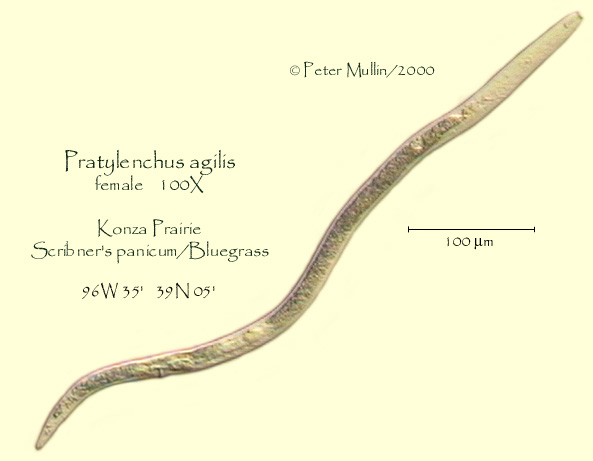Pratylenchus spp.
Lesion nematode

-
Damage. With a combined host range of
greater than 400 crop plant species, Pratylenchus
spp.
are among the nematodes of greatest economic impact in crops worldwide.
-
Biology. Lesion nematodes penetrate plant
roots completely and migrate throughout the root tissue, mainly the cortex,
as they feed. They produce characteristic necrotic lesions
(darkened areas of dead tissue) on the surface and throughout the cortex
of infected roots.
-
Ecology. Lesion nematodes are distributed
in nearly every temperate and tropical environment.
-
Symptoms. Above ground symptoms are often
general symptoms of plant root stress. However, high nematode
populations and infection of young plants can lead to stunting, nutrient
and water deficiencies, and eventual dieback.
-
Damage to other crops. Crops of primary economic
importance that are attacked by lesion nematodes include potato, coffee,
banana, rice, corn, peanut, forage legumes, and many fruits.
-
Control. The best way to manage lesion nematodes
is to prevent their introduction into a field. Control with nematicides
is not always successful.
-
Links and References. Plant
Disease Lessons- Lesion nematode disease. APSNet
|



